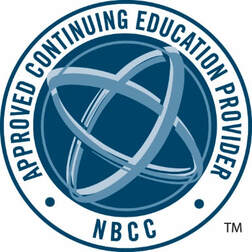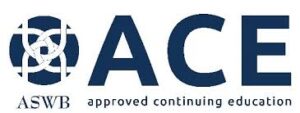Date course created: March 2022
Suicide and parasuicide (non-suicidal self-injury) are prominent features in borderline personality disorder. Although both are briefly described in the same diagnostic criteria, they are distinctly different clinical phenomena and require different treatment approaches. While evidence-based treatments for BPD have existed for over 20 years now, even the most skilled clinicians still lack a cohesive approach for conceptualizing and treating this difficult population and oftentimes find themselves at a loss regarding how to deal with these sometimes confusing behaviors in this challenging population.
They can be chaotic, impulsive and unstable. Research also suggests an estimated 75% of individuals with this diagnosis will commit at least one self damaging act and 10% eventually die by suicide.
The good news is, there is hope for helping these individuals find a life worth living.
Leave this 2.5-hour online training with internationally recognized personality disorder expert Jeff Riggenbach equipped with the clinical tools to:
- Distinguish suicide from parasuicide and learn specific interventions for each.
- Have conversations with your clients about the BPD diagnosis in a way that minimizes defensiveness and elicits client buy-in.
- Demonstrate an understanding of the 3 ways schemas are maintained and the role that they play in driving destructive behaviors.
- Differentiate BPD from PTSD, Bipolar disorder, and other sometimes difficult to discern conditions.
- Recognize the 8 most common reasons for NSSI endorsed by clients with BPD and apply clinically appropriate interventions for each.
- Discuss clinically appropriate disposition options in response to dangerousness.
**This is a 2.5-CE noninteractive, self-paced online video course delivered in home study format via an industry-standard online learning platform**
Agenda:
00:00 – 00:25: Introduction to BPD; Phases Overview; Conversational Approach; Relationship Dynamics
00:25 – 00:57: Impulsivity and Self-Damaging Behaviors; Suicidality; Psychoeducation and Client Engagement
00:57 – 01:45: Core Features of BPD; Building Rapport; Overview of Treatment Approaches
01:45 – 01:56: Schemas Overview; Group vs Individual Therapy Dynamics
01:56 – 02:37: Managing Thoughts and Emotions; Distraction Techniques; Safety Planning ; Coping Strategies
Objectives:
This training will provide participants clinical knowledge and tools to:
a). After completing this training, participants will be able to develop an in-depth understanding of the nine essential characteristics of Borderline Personality Disorder.
b). After completing this training, participants will be able to acquire language skills for having the conversation with clients and family members in a way that decreases client defensiveness an elicits buy-in.
c). After completing this training, participants will be able to learn the 8 motivations for NSSI highly endorsed by clients with BPD and appropriate intervention strategies for each.
d). After completing this training, participants will be able to separate 3 clinically significant “Suicidal” components to BPD and learn how to assess for each.
e). After completing this training, participants will be able to acquire key differential diagnosis skills for Borderline PD, PTSD, Bipolar Disorder and other clinically overlapping conditions.
f). After completing this training, participants will be able to learn the 18 maladaptive schemas present in BPD and their role in driving destructive behaviors.
g). After completing this training, participants will be able to develop skills in assessment of suicidality and parasuicidality and decision-making skills regarding appropriate levels of care for each.
h). After completing this training, participants will be able to utilize reasons for living to enhance hope and decrease suicide attempts.
i). After completing this training, participants will be able to learn critical keys for safety planning specific to the BPD population.
Course Outline:
BPD In Everyday Language
- Abandonment and Destructive Behaviors
- Suicide vs. Parasuicide
- 8 Motivations for NSSI
- Indications for Hospitalization
- BPD v Bipolar “mood swings”
- Differential Diagnosis
Evidence-Based Treatment
- DBT
- CBT
- Schema-Focused Therapy
The Role of Schemas in Destructive Behaviors
- 18 Early Maladaptive Schemas
- Schema Activation
- NSSI & Schema Maintenance
Treatment Set-up
- The Therapeutic Alliance
- Treatment Agreements
- Contracting
Skills Training Groups
- Relational Skills
- Emotion Regulation Skills
- Distress Tolerance Skills
- Cognitive Skills
Individual Therapy
- Session acuity protocol
- Diary Cards and Daily Logs
- Risk Assessment & Safety Planning
- Complex Chain Analysis
- Protective factors and Reasons for Living
Target Audience:
Mental Health Clinicians & Therapists, Social Workers, Psychologists, Marriage & Family Therapists, Counselors, School Personnel, Youth Development Workers, Healthcare Workers.
Instructional Level: Intermediate
Instructor(s): Jeff Riggenbach, PhD
Material Author(s): Jeff Riggenbach, PhD
For additional information about this course, the instructors, or the material authors, please contact Content Assistance at content@onlinececredits.com.
Course Materials & Delivery Method:
- Course materials – The course is composed of a recorded presentation and written materials (e.g. a slide deck and/or other worksheets, manuals, or handouts as provided by the instructor). The slide deck and any additional worksheets or handouts (as provided by the instructor) are made available inside the Lesson module after a course is purchased.
- Delivery Method – this course is a recorded asynchronous, self-paced webinar training, and there is no access time limit or due date to complete it once enrolled. The enrolled learner will stream the recorded presentation and view the materials from their internet connected device via an industry-standard online learning platform.
CE Approvals:

Online CE Credits has been approved by NBCC as an Approved Continuing Education Provider, ACEP No. 6795. Programs that do not quality for NBCC credit are clearly identified. Online CE Credits is solely responsible for all aspects of the programs.

Mind Works Professional Education, Inc. DBA Online CE Credits, #1974, is approved as an ACE provider to offer social work continuing education by the Association of Social Work Boards (ASWB) Approved Continuing Education (ACE) program. Regulatory boards are the final authority on courses accepted for continuing education credit. ACE provider approval period: July 23, 2024 – July 23, 2025. Social workers completing this course receive 2.5 clinical continuing education credits.
Other Helpful Information:
- Refund & Cancellation Policy – you may review this policy at any time by clicking here.
- Accessibility Accommodations – if you require a reasonable accommodation for any reason, please email your request to cc@onlinececredits.com
- Course Completion Requirements – 1.) View the entire Lesson module (accessible from the main course page), to include the embedded and/or linked presentation video(s), slide deck, additional materials, and/or links to any shared video clip(s) that may have been edited from the presentation video(s) to comply with copyright laws. 2.) Click into the Quiz module accessible from either the main course page or the Lesson page and complete the Quiz with an 80% or better pass rate. 3.) Complete the course evaluation – you’ll be sent to the evaluation automatically once you successfully pass the Quiz.
- Posttest Requirements – you must answer 80% or more of the Quiz questions correctly to pass. If you fail to pass the first time, you may attempt the quiz again until you are able to pass with a score of 80% or better. Quizzes are graded instantly and automatically by the learning management system once your attempt is submitted.
- Certificate of Completion – certificates of completion are automatically generated – downloadable from your Dashboard and emailed to you – once you view the Lesson materials and complete the Quiz and the course evaluation.
- How to Enroll – Login to the website first if you already have a user account. If not, you will create your permanent user account login information during course enrollment. Select the appropriate course library using the top menu of the website. Once inside your chosen course library, find and select your desired course to be taken to the main course page. Click the button on the top banner to enroll. When the order window pops up, enter your details and place your order. You will be emailed an enrollment confirmation message, and you’ll be sent to a landing page instructing you how to begin your newly enrolled course.
- System Requirements –
- Recommended Devices: Desktop, Laptop, or Tablet computer. (Note: Our platform is mobile responsive and may be fully accessed from a connected smartphone).
- Suggested Browsers: Updated version of Google Chrome, Microsoft Edge, or Apple Safari.
- Recommended Network: Home wifi, ethernet, or a public wifi with VPN (Note: agency or corporate networks are often equipped with restrictive firewalls that may adversely impact your experience on our platform).
- Recommended speed/bandwidth: Minimum download speed > 20Mbps and minimum upload speed > 6Mbps.
